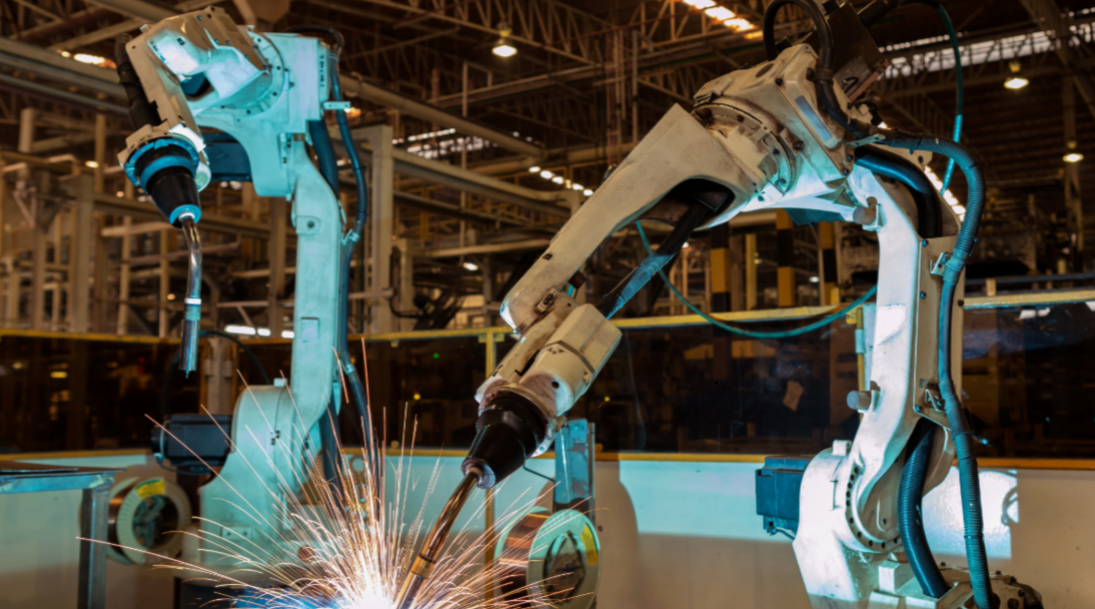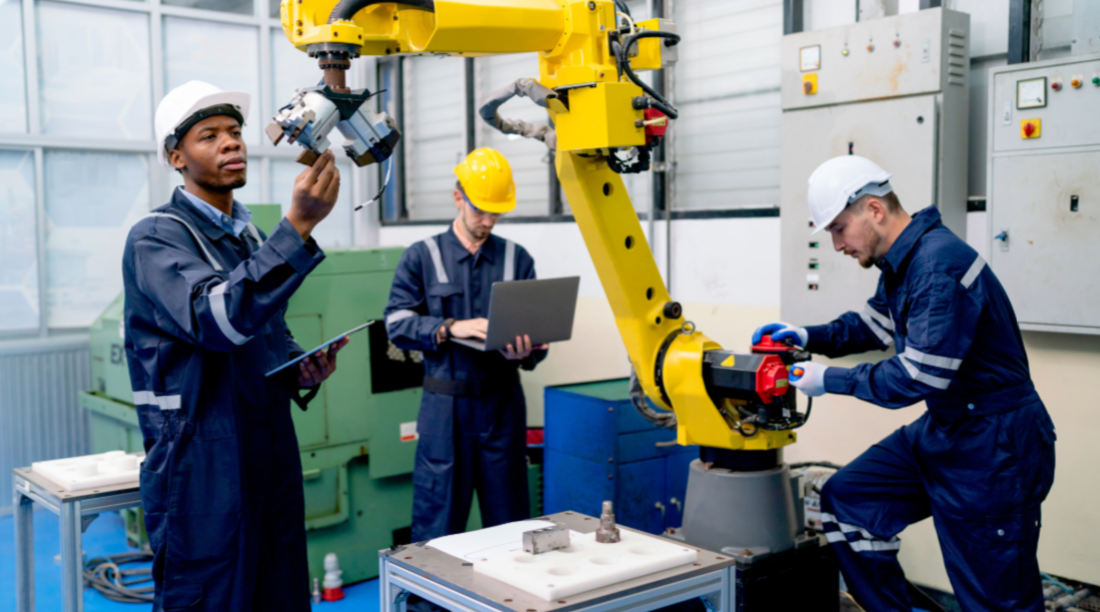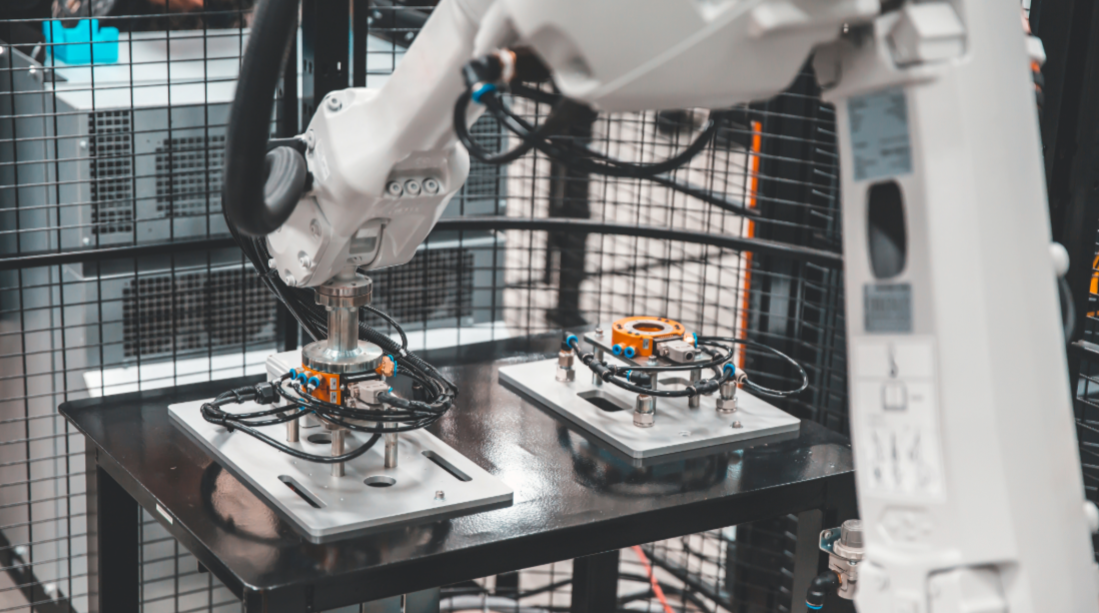The landscape of industry maintenance is on the brink of a transformation, thanks to robotics and automation. Gone are the days when routine checks and repairs demanded hours of human labor, often in risky or hard-to-reach environments. Today, we stand at a pivotal moment where technology promises to make these tasks not only quicker but also safer. So, you're probably wondering what's in store for businesses and their teams with all these changes happening. Let's dive into our topic, "Robotics and Automation in Maintenance: Transforming Industry Practices," and learn how AI-driven predictive maintenance and robots teaming up with humans are completely shaking up the way we think about taking care of things.
Understanding the Role of AI and Machine Learning in Predictive Maintenance
The shift towards automation is more than a trend; it is a strategic move towards a future where maintenance is not just about fixing issues but optimizing maintenance activities with the assistance of cutting-edge robotic technologies. It is clear that robotics is steering maintenance into an era of unprecedented efficiency and will play an important role in the future.
The arrival of Artificial Intelligence (AI) into maintenance practices has given rise to a new era of predictive maintenance. This proactive maintenance strategy uses AI algorithms to analyze vast datasets and offers excellent diagnostic measures, allowing for timely intervention.
Connected with these developments are Augmented Reality (AR) and Virtual Reality (VR). Companies are thinking seriously about bringing in new tech tools to get a crystal-clear picture of how their maintenance teams are doing.
The Shift Towards Automated Systems in Industry
In a rapidly advancing technological landscape, the role of robots in everyday life is undergoing swift evolution. These machines play a crucial part in various sectors, from automated systems to industrial robots. However, with the rise of robotics, effective maintenance becomes paramount.
The evolution of robotic maintenance practices is linked with the rapid advancements that are taking place. Currently, robotics in maintenance is not merely a futuristic concept but one of the key parts of the present. Its global market was valued at $4.23 billion in 2021. Remarkably, this figure is projected to surge to $10.05 billion by 2030 at a CAGR of 10.1% from 2022-2030. With 2.7 million robots in factories at present, the present state of robotics in maintenance mirrors an impressive deployment of robots.
Implementing Automation for Enhanced Efficiency and Safety

Strategies for Integrating Automation into Existing Workflows
Automation and robotics are transforming the manufacturing industry in countless ways. Whether it's improving efficiency, increasing safety, lowering costs, or enabling customization, these technologies are making it possible to produce more products, better products, and customized products.
Automation has been a key lever in enabling enterprises to transition from preventive maintenance to predictive maintenance systems. Offering remote monitoring capabilities to maintenance teams across industries, this move can transform the character of condition monitoring across processes such as:
- Lubrication and greasing
- Calibration
- Energy efficiency improvement in equipment
- TCO and EBITDA
Balancing Human Workers with Robotic Systems for Optimal Performance
As the manufacturing industry continues to evolve, automation and robotics are becoming increasingly common in production facilities across the globe. While some argue that these technologies are a threat to human jobs, others believe they are the key to a more efficient and productive industry.
Regardless of where you stand on the issue, it's clear that automation and robotics are here to stay, and they will undoubtedly play an important role in the future of manufacturing. Let's dive into how automation and robotics are not just changing the game in our industry but also what we might expect from these tech wonders down the road.
Navigating the Challenges and Opportunities of Maintenance Automation
Regardless of where you stand on the issue, it's clear that automation and robotics are here to stay, and they will undoubtedly play an important role in the future of manufacturing. Let's dive into how automation and robotics are not just changing the game in our industry but also what we might expect from these tech wonders down the road.
Overcoming Initial Investment Hurdles in Automation Adoption
One of the biggest hurdles companies face when they're thinking about jumping on the automation and robotics bandwagon is figuring out how to pay for it all upfront. Now, these fancy tools do come with a hefty price tag, and let's face it – not every company has the deep pockets needed to spring for them.
But let's not forget that while the upfront costs might seem steep, the long-haul benefits of diving into automation and robotics can really tip the scales in their favor. By reducing labor costs, increasing efficiency, and improving quality, these technologies can help companies save money and increase profits over time.
Leveraging Data Analytics for Improved Maintenance Schedules
Another key benefit of automation and robotics is the ability to collect and analyze vast amounts of data. By using sensors and other monitoring devices, companies can track the performance of their equipment in real time, identifying potential issues before they become major problems.
This data can also be used to optimize maintenance schedules, reduce downtime, and improve overall equipment effectiveness (OEE). By leveraging data analytics, companies can make more informed decisions about when to perform maintenance, reducing energy consumption and extending the life of their equipment.
Advanced Robotics Technologies Transforming Maintenance Tasks

Exploring the Use of Cobots in Routine Operations
Industrial robotics are a key element of Industry 4.0. As part of these rapid changes, the field of robotics is advancing at the same pace. That's also the case when it comes to robots for industrial maintenance.
Collaborative robots, or cobots, will continue to gain popularity. These robots are right there in the thick of it with human technicians, making things run smoother and safer. Cobots are here to be our teammates in shared work areas, lending a hand with tasks that demand precision or a bit of muscle.
The Potential of Nano-Robotics in Precision Maintenance
Companies like Thermo Fisher Scientific are researching how to take nano-robotics to the next stage. You'll start to see the payoff in all things maintenance, repair, and overhaul operations – better known as MRO. These robots carry our maintenance processes at microscopic levels.
Their minuscule size allows access to confined spaces, ensuring thorough maintenance without disassembly. And so they will improve the accuracy of detecting and rectifying faults with unparalleled accuracy. By working on such a tiny scale, nano-robotics really shines by barely touching the surrounding parts while making repairs more efficient than ever.
Enhancing Operational Efficiency with Smart Condition Monitoring
Utilizing Advanced Sensors for Real-Time Equipment Monitoring
Smart condition monitoring is a game-changer in the world of maintenance. Leveraging advanced sensors and real-time data analysis enables proactive maintenance strategies that can significantly reduce downtime and improve overall equipment effectiveness (OEE).
These sensors can monitor a wide range of parameters, such as vibration, temperature, pressure, and lubricant quality, providing valuable insights into the health and performance of equipment. This data can be used to identify potential issues before they escalate, allowing maintenance teams to take corrective action before a failure occurs.
In addition to reducing downtime, smart condition monitoring can also help optimize maintenance schedules, reduce unnecessary maintenance, and extend the life of equipment. By leveraging data analytics, companies can make more informed decisions about when to perform maintenance, reducing energy consumption and improving overall efficiency.
Robotics and AI are transforming maintenance practices by addressing potential failures before they occur. Through technologies like predictive analytics and augmented reality/virtual reality (AR/VR), maintenance processes are evolving from merely fixing issues to proactively optimizing performance. This shift towards automation isn't just a passing trend; it's crucial for enhancing efficiency and safety across various industries. Embracing these advancements is vital as they enable us to not only address current maintenance needs but also anticipate and prevent potential failures in the future. Therefore, investing in maintenance helps to ensure smoother operations and longer-lasting equipment, ultimately driving significant impacts on how we manage machines today.
Future Trends Shaping Robotics and Automation in Industry

The future of robotics and automation in industry is being shaped by emerging technologies that are transforming the way maintenance is performed. These advancements are enabling adaptive maintenance strategies that allow robots to swiftly respond to changes in the environment and identify potential issues before they become major problems.
One of the key technologies driving this change is the use of advanced sensors that can capture high-resolution images of equipment and analyze data in real time. This means robots can spot the tiniest odd things and fix them before anything breaks.
As these technologies continue to evolve, robotics offer the potential to improve quality, optimize performance, and reduce downtime in industrial settings. By ensuring high-quality maintenance and repair, companies can minimize the risk of costly disruptions and maintain a competitive edge.
However, realizing the full potential of these technologies requires developing skills and expertise in robotics and automation. As robots work alongside human technicians, both must be equipped with the knowledge and tools needed to collaborate and achieve optimal results effectively.
With the right approach, the integration of robotics and automation in maintenance can lead to significant improvements in efficiency, reliability, and overall equipment effectiveness. As these systems equipped with advanced capabilities become more prevalent, they will play an increasingly vital role in shaping the future of industry.
Maximizing Benefits Through Strategic Automation Decisions
Making the right automation decisions is crucial for companies looking to maximize the benefits of robotics and automation in maintenance. This requires careful consideration of factors such as platforming and integration, accessible talent, and ease of integration with existing systems and processes.
One key strategy is to focus on new capabilities that robots take on new roles in maintenance, such as handling low-volume production runs or highly variable tasks. By leveraging the flexibility and adaptability of robots, companies can improve efficiency and reduce costs in areas where traditional automation may not be feasible.
Another important consideration is the ability of robots to work alongside people in agile production systems. By designing processes that allow for seamless collaboration between humans and machines, companies can achieve the best of both worlds – the speed and precision of automation combined with the creativity and problem-solving skills of human workers.
At the end of the day, if you really want to knock it out of the park, putting together a solid plan that considers what your organization needs and aims for is essential. So, suppose companies take the time to really dig into the benefits and challenges of automation, making their moves based on solid data and careful analysis. In that case, they're setting themselves up for a win in this fast-moving automated world.
Overcoming Implementation Challenges to Reap Automation Rewards
While the benefits of automation in maintenance are clear, implementing automation can be a complex and challenging process. Companies must navigate a range of issues, from building automation competence among their workforce to managing the complexities of integrating new technologies with existing systems.
One of the biggest challenges is handling partial dependence and partial independence between automated systems and human workers. Making sure everything runs smoothly and works well together takes a bit of clever planning and teamwork.
Another key hurdle is overcoming resistance to change within the organization. This may involve educating workers about the benefits of automation and providing training and support to help them adapt to new roles and responsibilities.
Scaling across processes can also be a challenge, particularly for larger organizations with complex operations. So, we need a plan that focuses on the big wins first and rolls out automation in a way where you can actually see the benefits.
To address these challenges, companies must focus on building a flexible data-value chain that can adapt to changing needs and requirements. This may involve investing in cybersecurity measures to protect sensitive data and systems, as well as developing a human cyber-physical system (H-CPS) that allows for seamless collaboration between humans and machines.
By taking a proactive and strategic approach to automation implementation and building rapport with key stakeholders throughout the organization, companies can overcome these challenges and reap the full rewards of automation in maintenance.
The Role of CMMS in Streamlining Robotic Maintenance Processes

A Computerized Maintenance Management System (CMMS) can play a critical role in streamlining robotic maintenance processes and helping companies realize the full potential of automation. By providing a centralized platform for managing maintenance tasks, work orders, and asset data, a CMMS can help transform your robotic maintenance operations and drive significant improvements in efficiency and effectiveness.
One of the key ways that a CMMS helps overcome automation challenges is by providing real-time visibility into the health and performance of robotic systems. With advanced analytics and reporting capabilities, a CMMS can help maintenance teams identify potential issues before they become major problems and take proactive steps to prevent downtime and ensure optimal performance.
In addition, a CMMS can help secure opportunities for automation by providing a framework for standardizing and optimizing maintenance processes. By leveraging best practices and industry standards, a CMMS can help companies develop a more systematic and efficient approach to robotic maintenance, reducing costs and improving overall equipment effectiveness.
Another key benefit of a CMMS is its ability to facilitate collaboration and communication between maintenance teams and other stakeholders. By providing a centralized platform for sharing information and coordinating activities, a CMMS can help break down silos and ensure that everyone is working towards common goals.
A CMMS isn't just about keeping robots running; it's all about giving you the tools and insights to push for better performance and fine-tune everything constantly. By leveraging the power of automation and data analytics, companies can unlock new levels of efficiency, reliability, and performance and stay ahead of the curve in an increasingly competitive landscape.
Robots are revolutionizing maintenance with advanced sensors and adaptive strategies, making operations smoother and preventing issues before they escalate. But, to truly tap into this tech's potential, companies need the right skills and a strategic approach to automation decisions. Overcoming implementation challenges is key to harnessing automation's full benefits, with CMMS systems being pivotal in streamlining robotic maintenance for better efficiency and effectiveness.
Conclusion
Automation systems and modern robotics are revolutionizing how industries perform tasks, offering potential benefits such as enhancing efficiency and reducing maintenance costs. These technologies operate in hazardous environments where human intervention may be risky, thereby improving safety for maintenance professionals. Moreover, automation offers a paradigm shift in control strategies, enabling robots to navigate complex situations and perform repairs autonomously.
By incorporating automation systems, industries can significantly enhance efficiency while minimizing the environmental impact of operations. This shift towards automation also frees up human capabilities, allowing maintenance professionals to focus on higher-value tasks and problem-solving rather than routine maintenance activities. Furthermore, automation reduces the potential for human errors and failures, as robots operate with precision and consistency.
In summary, the integration of automation systems and modern robotics in maintenance represents a significant advancement with multiple benefits. From increased efficiency and cost savings to improved safety and reduced environmental impact, automation offers a transformative approach to industry maintenance practices. Robotics and Automation in Maintenance: Transforming Industry Practices.
 For immediate assistance, please call us at (512) 328-3235
For immediate assistance, please call us at (512) 328-3235


